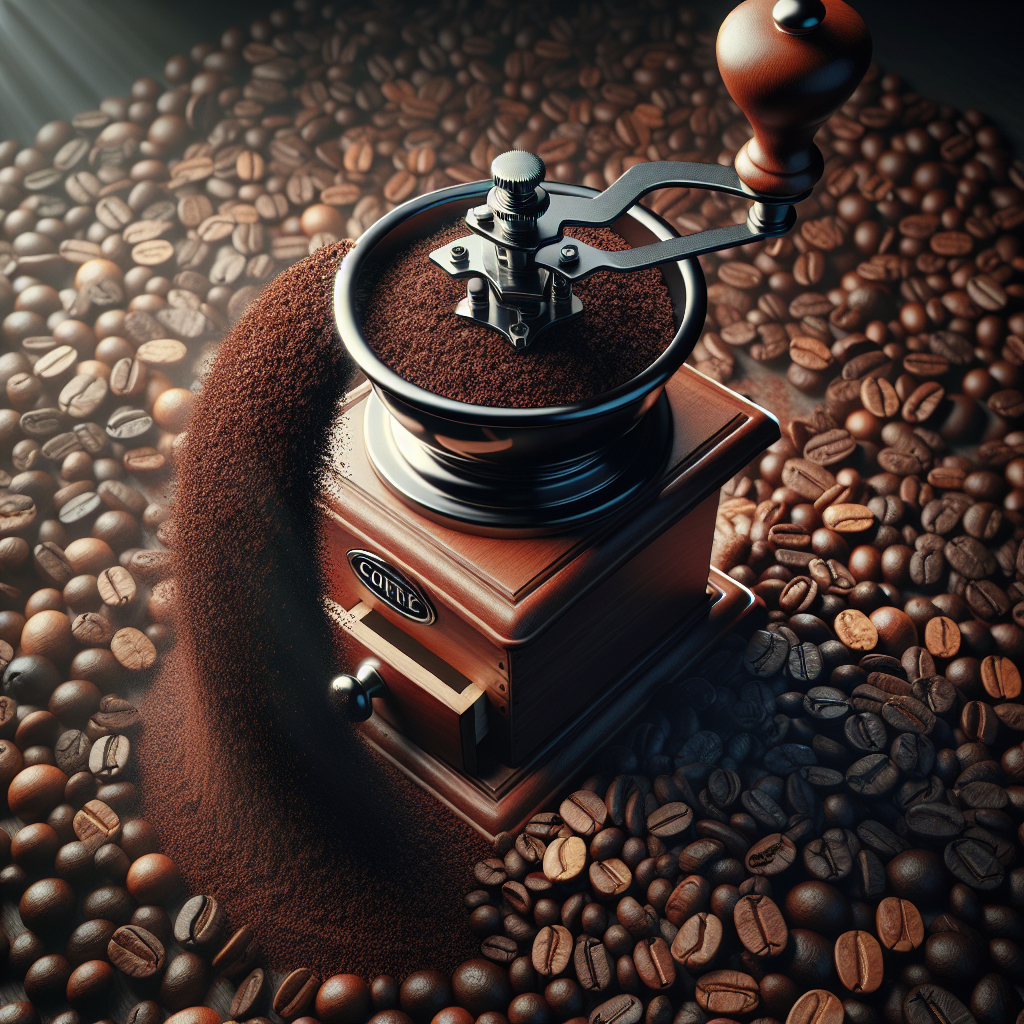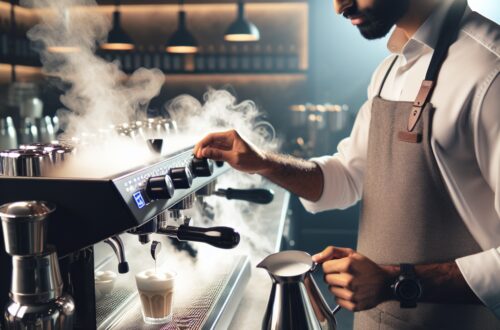“`html
Exploring the World of Coffee Grinders: A Guide to Grinding the Perfect Cup
1. Introduction to Coffee Grinders
For any coffee enthusiast, a quality coffee grinder is an essential tool in the journey towards brewing the perfect cup. Grinding your coffee beans just before brewing can significantly enhance the taste and aroma of your coffee. The history of coffee grinders dates back to ancient times, with a variety of innovations leading to the range of manual and electric grinders we have today. The type of grinder you choose can impact the flavor profile of your coffee significantly, making it crucial to understand the options available.
Whether you are new to coffee brewing or a seasoned barista, owning the right grinder can transform your coffee experience. Grinding affects the extraction process, influencing the flavor and aroma. Different brewing methods require specific grind sizes, making it important to have an adjustable grinder. Learn more about other coffee accessories here to complement your brewing setup efficiently.
Understanding Burr Coffee Grinders
Burr coffee grinders are highly regarded for their ability to produce a consistent grind size. Understanding how they work is key to appreciating their advantages over other grinder types.
How Burr Grinders Work
Burr grinders crush coffee beans between two grinding surfaces, also known as burrs. The distance between these surfaces can be adjusted to control the grind size, ensuring uniform particles for each brewing method. Burr grinders can be categorized into flat and conical types, each with its own unique benefits.
Advantages of Burr Grinders
Burr grinders are favored for their grind uniformity, crucial for an even extraction and a balanced cup of coffee. The adjustable settings allow users to switch between grind sizes for different brewing methods, from espresso to French press. These grinders are known for their durability, requiring minimal maintenance to keep performing optimally.
Maintenance of Burr Grinders
Regular cleaning is essential to maintain the performance of a burr grinder. Disassembling the parts, brushing away coffee residues, and occasionally deep cleaning with a grinder cleaner can help extend its lifespan. Higher-end models often come with easier-to-clean parts and additional features enhancing the user experience.
Exploring Blade Coffee Grinders
Blade coffee grinders, on the other hand, offer a more economical and straightforward way to grind beans. Let’s delve into how they operate and when they might be suitable for your needs.
How Blade Grinders Operate
Blade coffee grinders use a spinning blade to chop the coffee beans. The grind size is controlled by the duration of the grinding process. While they are easier to use and more affordable, they often result in inconsistent grind sizes, which can affect the flavor extraction.
Pros and Cons of Blade Grinders
The main advantage of blade grinders is their cost-effectiveness and simplicity. They are ideal for beginners or those who do not need precise grind size control. However, the inconsistency in grind size can lead to uneven extraction and a less than perfect coffee experience. Regular cleaning is also necessary to prevent the buildup of coffee oils which can affect flavor.
| Criteria | Manual Grinders | Electric Grinders |
|---|---|---|
| Cost | Lower initial cost | Higher initial cost |
| Grind Consistency | May require more effort for consistent grind | Consistent grind size with adjustable settings |
| Convenience | Hand cranking may require more effort | Effortless and quick grinding |
| Portability | Easily portable for travel or outdoor use | Limited portability due to electric operation |
| Suitability | Suitable for solo use or small batches | Ideal for larger quantities or frequent grinding |
| Maintenance | Minimal maintenance required | May require occasional maintenance and cleaning |
| Best Scenarios | Great for travel, camping, or as backup grinder | Perfect for daily home use or commercial settings |
Key Parts of a Coffee Grinder
Understanding the key components of a coffee grinder can help you make an informed choice and maintain your grinder effectively.
Essential Parts and Their Functions
Coffee grinders consist of burrs or blades, cylinders, and motors. Burrs are the grinding surfaces that determine the grind size, while the motor controls the speed and duration of the grinding process. Cylinders guide the beans to the burrs or blades, ensuring they are ground uniformly.
Commercial vs. Home Grinders
Commercial grinders are designed with larger motors and robust parts to handle continuous use without overheating. These grinders often provide more precise grind settings and require minimal maintenance. Home grinders, while varying in quality and price, are designed for less frequent use, focusing on user convenience and ease of cleaning.
Manual vs. Electric Grinders: Pros and Cons
Choosing between manual and electric grinders depends on your preferences and brewing habits. Here’s a detailed comparison to help you decide.
Cost
Manual grinders are generally less expensive than electric grinders. They offer a cost-effective way to achieve a decent grind but require more effort.
Grind Consistency
Electric grinders often provide more consistent grind sizes due to their adjustable settings and motorized operation. Manual grinders can achieve similar results but may require more effort and skill.
Convenience and Portability
Manual grinders are portable and perfect for travel or outdoor use. Electric grinders offer the convenience of effortless grinding, making them ideal for home use.
Maintenance
Both types require regular maintenance. Manual grinders typically need minimal upkeep, while electric grinders might need occasional cleaning and maintenance due to their complex parts.
Best Scenarios for Each Type
Manual grinders are excellent for small batches or as a backup option. Electric grinders are perfect for daily home use or commercial settings where larger quantities of coffee need to be ground efficiently.
Deciding the Right Type for You
Consider your brewing frequency, the volume of coffee you prepare, and your budget before choosing a grinder. Both types have their unique advantages, so select the one that aligns with your coffee habits and lifestyle.
Tips for Grinding the Perfect Cup of Coffee
Achieving the perfect grind is essential for brewing exceptional coffee. Here are some tips to help you get it right every time.
Understanding Grind Sizes
Different brewing methods require specific grind sizes. For example, espresso needs a fine grind, while a French press requires a coarse grind. Investing time in understanding these requirements can elevate your brewing game.
Calibrating Your Grinder
Regularly calibrate your grinder to ensure consistent results. Experiment with different settings to find the perfect grind size for your preferred brewing method.
Bean Measurement and Freshness
Measure your beans accurately and grind them just before brewing to preserve their freshness and flavor. Storing coffee beans properly also plays a crucial role in maintaining their quality.
Avoiding Common Mistakes
Avoid overloading your grinder and ensure it’s properly cleaned to prevent any flavor contamination. Experimenting with different settings and beans can help you find the optimal grind for your taste.
Creating the perfect cup of coffee starts with the right grind. Whether you choose a manual or electric grinder, understanding the nuances of grind size, consistency, and proper maintenance can significantly enhance your coffee experience. Delve deeper into our comprehensive guide on coffee accessories here to take your coffee passion to the next level.
“`
Shop at Breville now!
https://breville.oie8.net/oqDqrE
Shop Coffee grinder at Amazon now!
Click here!





